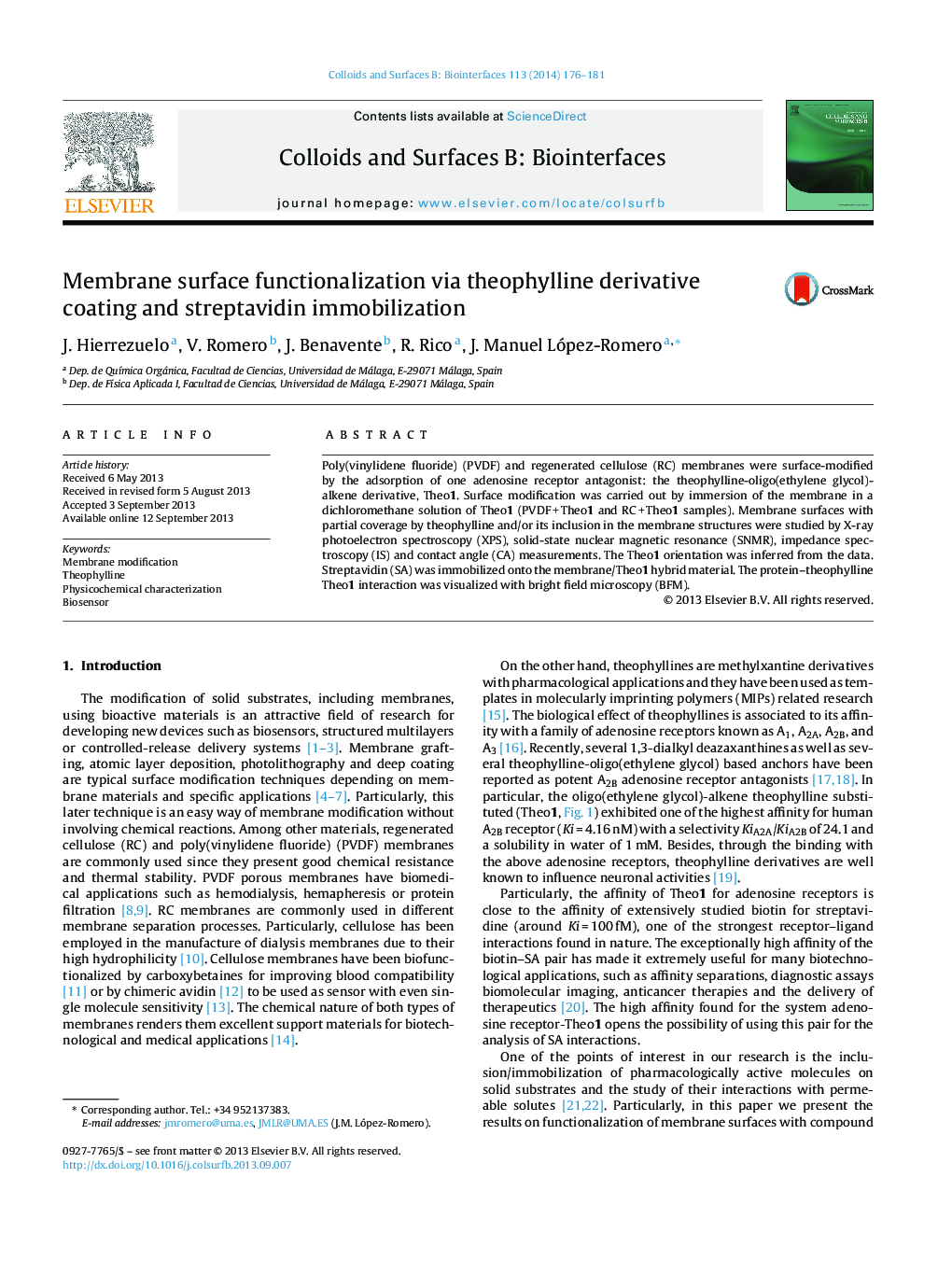| Article ID | Journal | Published Year | Pages | File Type |
|---|---|---|---|---|
| 599977 | Colloids and Surfaces B: Biointerfaces | 2014 | 6 Pages |
•Modification of membrane surfaces by using bioactive materials.•Theophylline derivative as an alternative to biotin for monitoring streptavidin interaction.•Easy procedure for monitorization of the protein interaction by bright field microscopy.
Poly(vinylidene fluoride) (PVDF) and regenerated cellulose (RC) membranes were surface-modified by the adsorption of one adenosine receptor antagonist: the theophylline-oligo(ethylene glycol)-alkene derivative, Theo1. Surface modification was carried out by immersion of the membrane in a dichloromethane solution of Theo1 (PVDF + Theo1 and RC + Theo1 samples). Membrane surfaces with partial coverage by theophylline and/or its inclusion in the membrane structures were studied by X-ray photoelectron spectroscopy (XPS), solid-state nuclear magnetic resonance (SNMR), impedance spectroscopy (IS) and contact angle (CA) measurements. The Theo1 orientation was inferred from the data. Streptavidin (SA) was immobilized onto the membrane/Theo1 hybrid material. The protein–theophylline Theo1 interaction was visualized with bright field microscopy (BFM).
Graphical abstractFigure optionsDownload full-size imageDownload as PowerPoint slide
